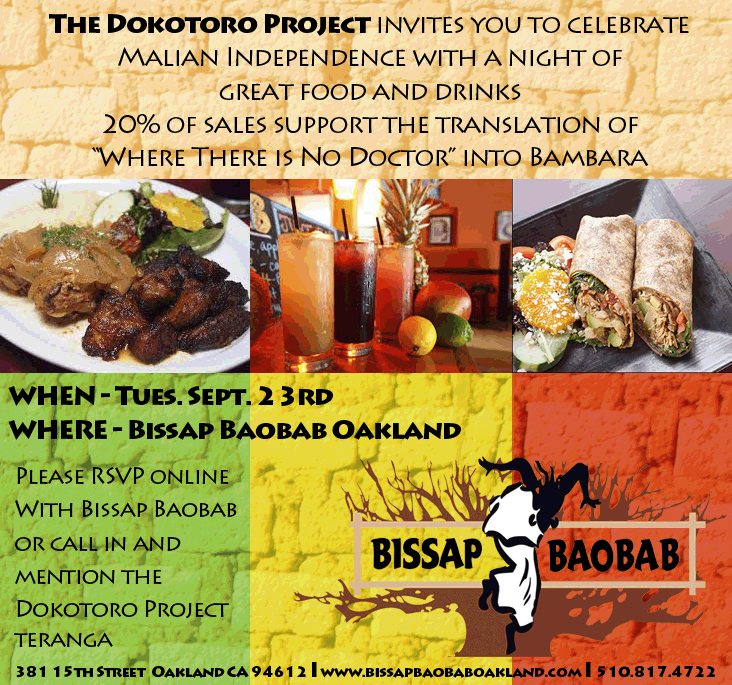Here is some fantastic singing and playing of traditional instruments by late Malian griot Fodé Kouyaté (1958-1997). The title of the clip is “An ka wili,” or “Let’s stand up.” It’s an exhortation to work hard for the betterment of your community and your country. It also shows you how much variation there is in Bambara pronunciation and spelling; most dictionaries show “wuli” rather than “wili.”
Monthly Archives: August 2014
Join us for dinner at Bissap Baobab Oakland on Sept 23!
Come celebrate Malian Independence Day with us!
Our favorite West African restaurant, Bissap Baobab in Oakland CA, is hosting a teranga for the Dokotoro Project on Tuesday September 23 (the day after Malian Independence Day). In Wolof, teranga means “hospitality,” and 20 percent of the night’s proceeds will be donated to the Dokotoro Project!
Just call the restaurant at (510) 817-4722 or visit them online to make a reservation. Either way, make sure to mention “Dokotoro teranga.” It’s an easy and delicious way to support health in West Africa. Please spread the word — and see you there!
Dokotoro Project Update, August 2014
Our Steering Committee held its monthly meeting on August 3, and there are a lot of things happening right now. Here is a quick project update.
Layout – We had a lot of discussions about software. We had a strong interest in using free and open source software for layout, since we are thinking about our partners in Mali who will one day take over responsibility for the book, keeping it up to date, and publishing new editions. They may even like to translate it into other African languages. The program Scribus looked promising, but one commenter said that it is not good at handling large numbers of images. Since Where There is No Doctor has over 1,000 images, that pretty much rules it out.
We’ve decided to go with the conventional, industry-leading software, Adobe InDesign. There is a new plugin available called Wordsflow that a lot of designers are excited about. It lets you maintain a “live link” to MS Word documents. We hope that this will help solve the “chicken and egg” dilemma with design: You don’t want to do the design until your content is finalized. But we need to show the book to health workers in Mali to collect feedback before we publish the final edition. And how can we show it to them if it hasn’t been layed out properly?

